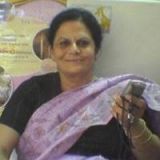On Request from dear readers- All about blood pressure monitoring out need to know
guidelines could be understood briefly as under:
Normal : Under 120 and Under 80
Prehypertension: 120-139 or 80-89
Stage 1 hypertension: 140-159 or 90-99
Stage 2 hypertension: over 160 or over 100
Correct measurement and interpretation of the blood pressure (BP) is essential in the diagnosis and management of hypertension. It is essential that BP machines are properly calibrated, appropriate cuff sizes are selected, and, when BP is measured in an office-based setting, personnel are properly trained and the patient is positioned correctly.
Hypertension can be diagnosed using one of the following three acceptable measurement strategies:
●Ambulatory blood pressure monitoring (ABPM)
●Home blood pressure monitoring
●Office-based blood pressure measurements
Ambulatory blood pressure monitoring (ABPM) is determined using a device (worn by the patient) that takes blood pressure (BP) measurements over a 24- to 48-hour period, usually every 15 to 20 minutes during the daytime and every 30 to 60 minutes during sleep. These blood pressures are recorded on the device, and the average day (diurnal) and night (nocturnal) blood pressures are determined from the data by a computer.
In India usually the instruments are given on rent to the patient to come back after a day to submit the monitoring and coma back later for the report generated to be followed up in OPD.
Home BP monitoring is done through instruments that may be analog (manual) or with semi automatic instruments. the difference is that one uses the stethoscope to listen to the beats and the other does that automatically by inflation of the cuff and then displaying the reading on the monitor.
The proper measurement of office-based BP requires attention to all of the following:
●Time of measurement
●Type of measurement device
●Cuff size
●Patient position
●Cuff placement
●Technique of measurement
●Number of measurements
Some tips on the position:
Patient position — The BP should be taken with the patient in a seated position with the back supported and legs uncrossed. The diastolic pressure (Lower reading ) may be higher by 6 mmHg if the back is unsupported, and the systolic (upper reading) pressure may be raised by 2 to 8 mmHg if the legs are crossed
Supine (lying down) values tend to be slightly different, with the systolic pressure higher by two to three mmHg and the diastolic pressure lower by a similar degree. Supine and standing measurements should always be taken in the elderly and diabetics to detect postural hypotension.
The arm should be supported at the level of the heart. If the arm is allowed to hang down when the patient is sitting or standing, the measured BP will be elevated by 10 to 12 mmHg due to the added hydrostatic pressure induced by gravity. The patient should sit quietly for five minutes before the BP is measured [25]. Bladder distension, talking, and background noise can all affect the measured BP.
we have more data on the myths about the BP and then medications that will come over shortly for each reader. Thanks more













